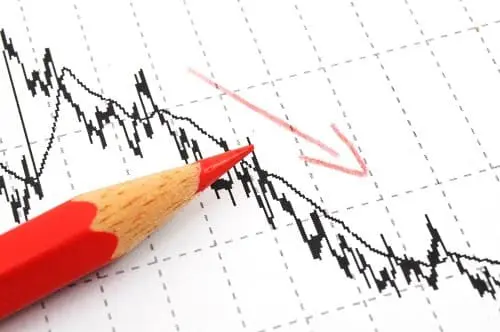
Last month we discussed the continued optimism of American small business owners as 2018 draws to a close. As that article mentioned, the U.S. Chamber of Commerce’s 2018 4Q small business index measured a strong 69.3, just six-tenths of a point down from its all-time high.
According to the chamber, the results show small business owners and operators are still upbeat about the overall national and local economies. More than a quarter of small businesses surveyed said they planned to increase investments and hire more staff in 2019. However, as the calendar now flips to a new year, is that near-record optimism justified in light of recent economic news?
Current business headlines across the news spectrum have suddenly grown darker. While there is no clear consensus that a recession is on the horizon, an increasing number of forecasts point to an overall slowing of the domestic economy.
For example, the Washington Post declares “Wall Street Predicts Economy Slowing Dramatically.” The story says investment bank Goldman Sachs is predicting a second-half of 2019 slowdown due to the fading effects of federal tax cuts and rising federal interest rates.
Another Wall Street banking firm, UBS Global Wealth Management, is quoted in a Fox Business News article that a slowdown is coming, but a recession is unlikely. Instead of a recession, UBS CIO Mike Ryan said the slowdown will be more like a “moderation” of the economy. Ryan told Fox Business consumer confidence remains high and the banking sector is improving.
Meanwhile, USA Today reports business spending is starting to dip, in part due to the U.S.-China trade war. The trade war has impacted revenues and cash flow, and that is causing many manufacturers to delay key spending plans. The article quotes one manufacturing CEO as being “uncomfortable” with spending due to the ongoing uncertainty.
That uncertainty has rocked the stock markets in 4Q 2018, which are roiling with volatility. Drops of several hundred points followed by large jumps are increasingly common, reflecting investors’ increasing concerns over the future direction of the economy. For example, on Dec. 26, the Dow Jones saw a record-setting 1,021-point jump that would have had investors dancing with joy had it happened in July. However, the one-day surge only helped mitigate drops of 525 points, 426 points and 365 points in the previous three days of trading.
Overall, the stock market has gone through a very rough final quarter of 2018. On Oct. 1, the Dow opened at 26,598, while the NASDAQ began the day at 8,091. The Dow reached its high for the quarter two days later midday at 26,951 before closing at 26,828 on Oct. 3. The NASDAQ’s high for the quarter came during the Oct. 1 session at 8,107 before closing the day at 8,037. It’s been a downhill slide for both ever since. The Dow reached its low for the quarter at 21,712 early in the Dec. 26 session moments before the 1,021 surge kicked in to close at 22,878. The NASDAQ sunk to its quarterly low of 6,190 near the end of the shortened Dec. 24 session, closing at 6,192. On Jan. 2 (the first trading day of the year), the Dow opened at 24,809 while the NASDAQ started at 6,937. On Dec. 31, the Dow closed at 23,327 (a 1,482-point drop for the year) and the NASDAQ closed at 6,635 (a 302-point drop for the year). A year that started with such promise ended with a lot of uncertainty.
So, after all those forecasts and all those numbers, the real question is: What does this mean for small business owners? Will 2019 resemble the optimism of the U.S. Chamber of Commerce’s survey? Or will it more closely reflect the views of economists and investors? Only one thing is certain, and that is no one knows for sure. But there are a few things you can do now to prepare yourself just in case.
Increase your sales channels: If you’re overly dependent on one type of product or sales package, you may be hit hard in an economic downturn as your customers decrease spending or look for different types of deals.
Seek out new sales partnerships and alliances: This will enable you to reach a greater variety of leads and attract new prospects in the event a slowdown causes a drop in your revenues.
Improve customer service: It’s likely you already offer great customer service, but there’s always room for review and improvement. Look for ways to enrich your customers’ experiences with you and strengthen their loyalty to you, that way, should a recession hit, they’ll be less likely to seek a better deal elsewhere in the event they have to cut spending.
Boost your credit: Having more credit during a recession will help you better weather a potential economic downturn.
- What Is An Invoice Factoring Broker? - July 17, 2022
- 7 Tips for Buying Out a Business Partner or Majority Owner - May 13, 2022
- 6 Leadership Secrets Every Small Business Owner Should Know - December 9, 2021

